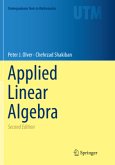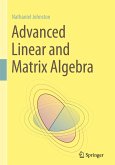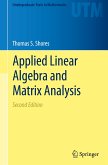This textbook develops the essential tools of linear algebra, with the goal of imparting technique alongside contextual understanding. Applications go hand-in-hand with theory, each reinforcing and explaining the other. This approach encourages students to develop not only the technical proficiency needed to go on to further study, but an appreciation for when, why, and how the tools of linear algebra can be used across modern applied mathematics.
Providing an extensive treatment of essential topics such as Gaussian elimination, inner products and norms, and eigenvalues and singular values, this text can be used for an in-depth first course, or an application-driven second course in linear algebra. In this second edition, applications have been updated and expanded to include numerical methods, dynamical systems, data analysis, and signal processing, while the pedagogical flow of the core material has been improved. Throughout, the text emphasizes the conceptual connections between each application and the underlying linear algebraic techniques, thereby enabling students not only to learn how to apply the mathematical tools in routine contexts, but also to understand what is required to adapt to unusual or emerging problems.
No previous knowledge of linear algebra is needed to approach this text, with single-variable calculus as the only formal prerequisite. However, the reader will need to draw upon some mathematical maturity to engage in the increasing abstraction inherent to the subject. Once equipped with the main tools and concepts from this book, students will be prepared for further study in differential equations, numerical analysis, data science and statistics, and a broad range of applications. The first author's text, Introduction to Partial Differential Equations, is an ideal companion volume, forming a natural extension of the linear mathematical methods developed here.
Providing an extensive treatment of essential topics such as Gaussian elimination, inner products and norms, and eigenvalues and singular values, this text can be used for an in-depth first course, or an application-driven second course in linear algebra. In this second edition, applications have been updated and expanded to include numerical methods, dynamical systems, data analysis, and signal processing, while the pedagogical flow of the core material has been improved. Throughout, the text emphasizes the conceptual connections between each application and the underlying linear algebraic techniques, thereby enabling students not only to learn how to apply the mathematical tools in routine contexts, but also to understand what is required to adapt to unusual or emerging problems.
No previous knowledge of linear algebra is needed to approach this text, with single-variable calculus as the only formal prerequisite. However, the reader will need to draw upon some mathematical maturity to engage in the increasing abstraction inherent to the subject. Once equipped with the main tools and concepts from this book, students will be prepared for further study in differential equations, numerical analysis, data science and statistics, and a broad range of applications. The first author's text, Introduction to Partial Differential Equations, is an ideal companion volume, forming a natural extension of the linear mathematical methods developed here.








